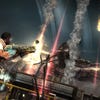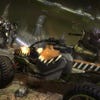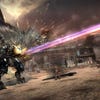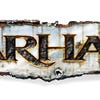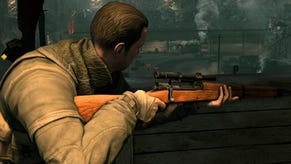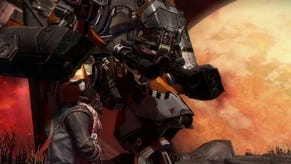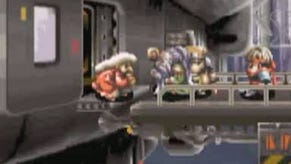Starhawk
Bird of play.
The guns have fallen silent in 2007's Warhawk. Not long ago it was a continual cycle of Battlefield-style multiplayer tangles between troops, tanks and futuro-planes. Now, due to our cruel PSN-enforced absence, the Eucadian and Chernovian armies have little to do but share the occasional cigarette, take a football into the no man's land that lies between CTF points and begin to wonder whether they're not so different after all.
In a distant time and far away place, however, new trouble is brewing deep in space. Sequel Starhawk is about to provide a fresh battle in a new universe – a full price game that brings a coherent solo campaign into the mix alongside a fascinating, almost RTS-styled, approach to base-building.
Oh, and aerial combat with Hawks that look like Panzer Dragoon, Transformers and a Peregrine Falcon freaked out and had crazy babies. (Itself a rather uncomfortable experience for what is, let's not forget, an endangered species).
Starhawk takes place on the edge of space – a frontier where a sprawl of moons and planets have a magic blue substance called Rift Energy sloshing around their insides. Something of a Gold Rush has built up around this energy, and many and varied unshaven space-types are laying claim to the Rift Geysers that litter the area. If you've got the Eyes of the Starhawk, you may well notice that this is a game that's very much crossed into full-on Firefly, Borderlands and Bravestarr territory.
Far from being a simple blue splodgey source of renewable power, however, Rift Energy has the power to turn men mad, melt their face, elongate their bones and inflict a somewhat sinister fashion sense.
Those overly exposed to Rift Energy, then, have formed roving Outcast warbands – devoted to seeking out geysers, worshipping them and massacring their former workmates and loved-ones.
It's down to the solo game's hero, Emmett Graves, to travel from space system to space system and geyser to geyser – fending off the Outcasts and securing the energy so his fellow colonists can convert them to filthy lucre.
He can do this because Emmett is the only man alive to have been infected by the Rift with his mind intact. Though it did leave him with a manky right hand and the ability to suck Rift Energy into a handy backpack.
As he runs around various arenas pulling off satisfying and meaty violence on Outcasts (sniping, chucking grenades, machine-gunning and occasionally resorting to actual bodily harm), Rift Energy leeches out of his fallen foes and into his own body.
So far so generic, but the way this energy can be used is genuinely fascinating. It's a gameplay tool well-used in both the single-player campaign and the franchise's familiar online skirmishes.
Starhawk's levels aren't comprised of linear sequences of Outcasts hiding behind explosive crates. They're large circular arenas in which Graves must fight off waves of enemies being beamed into the environment, while he busies himself with various objectives across the map.
From the top-down each mission essentially looks like a Venn Diagram of hurt, with various hotspots of enemy activity appearing and converging to capture geysers and destroy your structures.



